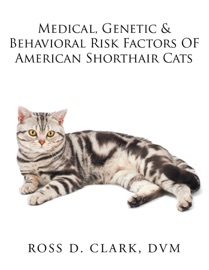
Although this native cat has been around for centuries, probably aboard with the pilgrims on the Mayflower, it was not recognized until the early 1900s. This cat could be found on farms, near barns, or in the house performing its duties as a pest controller. Due to the harsh living conditions this working cat was exposed to, it developed into a powerful, tough breed. In 1900 or 1901, the first short-haired cat was registered. However, it was actually a red tabby British shorthair called Belie. Finally, in 1904, a male smoke named Buster Brown was registered and recognized as the first member of American heritage. Through good breeding programs, the American shorthair gradually became established and separated from its European cousins. Progress was visible by the 1930s and 1940s, and by 1950, the CFA printed a stud book listing fifty domestic shorthairs. Prior to 1966, this breed was known as the Domestic shorthair, a title that is still commonly used. The American shorthair is the sixth most popular breed registered by the CFA based on 2014 registrations. Nonpedigree American shorthairs referred to as Domestics were considered foundation stock and were accepted by the CFA until January of 1985. Since many alley cats may look like purebred American shorthairs, breeders are continually having to display the differences between their purebred animals and those of a combination of various matings. The actual proof of a purebred American shorthair is that it will produce a uniform litter of kittens which are all the same type.